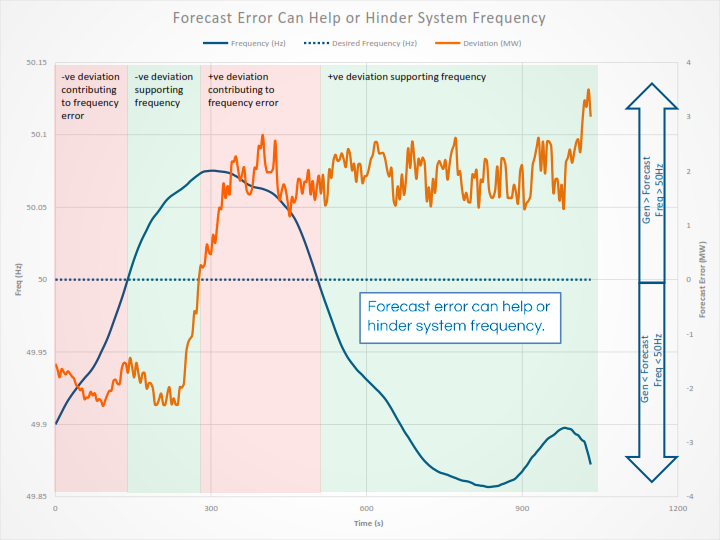SCADA Miner offers 5-minute self-forecasting services to wind farms and solar farms. Self-forecasting is an alternative to AWEFS and ASEFS (Australian Wind/Solar Energy Forecasting System). Self-forecasting offers the generator an opportunity to significantly decrease FCAS (Frequency Control Ancillary Services) causer pays charges.
FCAS Causer Pays
FCAS regulation setpoints are sent by AEMO’s Automatic Generation Control (AGC) to those Generators enabled to provide regulation services. If system frequency is low, AGC will call upon regulation raise from enabled FCAS providers, requesting them to increase production to accelerate system frequency. If system frequency is high, regulation FCAS providers are requested to decrease production.
Causer Pays is used to recoup the cost of FCAS regulation services.
AEMO uses Regulation FCAS to compensate for forecast errors in production and load. For every wind and solar farm, AEMO expects (forecasts) a certain power output at each 5 minute dispatch interval. AEMO assumes a linear ramp between dispatch intervals, and assesses Generator performance against this dispatch target every 4 seconds.
FCAS costs are recoverable from the causers of a need for regulation FCAS i.e. Generators with poor performance compared to their forecast.
FCAS Causer-Pays (Simplified)
The following image simplifies one of the underlying concepts of FCAS causer pays. The plot depicts a hypothetical generator deviation in orange. This represents (Actual Generation minus Forecast Generation). Every four seconds, AEMO calculates a performance measure, determining how much each generator helped/hindered system frequency. Periods where the generator’s deviation supported system frequency correspond to the green shaded regions of the plot. Periods where the deviations caused the need for regulation FCAS are shown in red.
At the end of each 28-day assessment period, AEMO aggregates the performance measures and the calculates an overall performance score. This score is then combined with other generators in a market participant’s portfolio, and a market participant factor (MPF) is calculated. AEMO uses the MPF to apportion FCAS procurement costs to each market participant.

